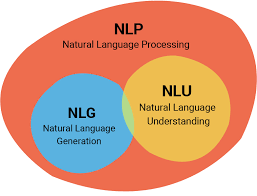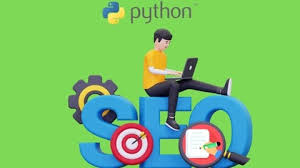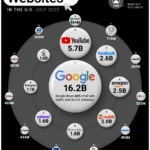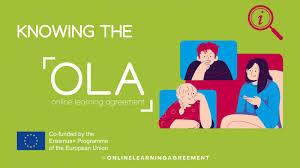In the ever-escalating arms race of digital marketing, you’re constantly fighting for an edge. You’re swimming in data from Google Analytics, Search Console, Ahrefs, and a dozen other platforms. You spend hours exporting CSVs, wrestling with VLOOKUPs in Excel, and trying to connect dots that refuse to align. You know the answers are in the data, but getting to them feels like a manual, soul-crushing chore.
What if I told you there’s a secret weapon that the top 1% of marketers are using to automate the grunt work, uncover hidden opportunities, and make data-driven decisions at a scale your competitors can only dream of?
That weapon is Python.
And the best part? The journey of learning Python is more accessible than ever, thanks to a boom in free online learning and world-class online learning platforms. This isn’t just about adding a new skill to your LinkedIn Learning profile; it’s about fundamentally changing the way you approach marketing.
This guide is your launchpad. We’ll bypass the generic “hello world” tutorials and dive straight into five actionable, high-impact use cases for Python in SEO and digital marketing. We’ll show you why it’s a game-changer and provide a clear pathway for your online education learning journey, so you can start leveraging this power today.
Why Python? The Marketer’s Case for Code
Before we get into the “how,” let’s address the “why.” Why should a marketer, who is already strapped for time, venture into the world of programming?
The answer is simple: Scale, Speed, and Sophistication.
Traditional marketing tools are fantastic, but they have their limits. They operate within the confines of their user interface. Python, on the other hand, is a limitless sandbox.
- Automation: Repetitive tasks like checking keyword rankings, pulling competitor backlink data, or generating weekly reports can be automated with a simple Python script. This frees up dozens of hours a month for you to focus on strategy.
- Data Integration: Your data is scattered across multiple silos. Python acts as a universal adapter, allowing you to pull data from any platform with an API (Application Programming Interface)—Google Ads, Facebook, Search Console, your CRM—and merge it into a single, unified view. This is where true business intelligence begins.
- Advanced Analysis: Move beyond basic metrics. With Python, you can apply statistical models, tap into what is machine learning is truly capable of, and even perform predictive analytics to forecast traffic or conversions. This is the leap from being a reactive marketer to a predictive strategist.
The benefits of online learning for a skill like Python are immense. You can learn at your own pace, on your own schedule, from the best online learning platforms in the world, often for free or for a fraction of the cost of a traditional degree.
Use Case 1: SEO On-Page Audit Automation at Scale
The Problem: Manually auditing a website with hundreds or thousands of pages is a nightmare. Checking for title tags, meta descriptions, H1 tags, word count, and internal links one by one is not a viable strategy. You either spot-check a few pages or pay for expensive crawler tools that might not check for the specific custom elements you care about.
The Python Solution: By combining Python libraries like Requests (to fetch the webpage’s HTML), BeautifulSoup4 (to parse the HTML), and Pandas (to organize the data), you can build your own custom SEO crawler.
Imagine this workflow:
- Input: You provide the script a list of URLs from your sitemap.
- Execution: The script visits each URL.
- Extraction: For each page, it automatically extracts:
- The title tag and its length.
- The meta description and its length.
- All H1 and H2 tags.
- The total word count of the main content.
- The number of internal and external links.
- The
alttext of all images.
- Output: The script compiles all this information into a clean, single CSV file.
In minutes, you have a complete on-page SEO audit of your entire website. You can instantly spot pages with missing meta descriptions, duplicate H1 tags, or thin content. This is a service that SEO agencies charge thousands of dollars for, and you can build the engine for it yourself.
Live Daily Information Context: As Google’s algorithms evolve daily, your auditing needs change. Did Google just put more emphasis on internal linking context? You can modify your Python script in an afternoon to analyze the anchor text of all internal links—a level of customization you won’t find in most off-the-shelf tools.
Source Links & Further Learning:
- Beautiful Soup Documentation: crummy.com/software/BeautifulSoup/bs4/doc/
- A great tutorial on web scraping: Real Python: Practical Introduction to Web Scraping
(Suggested Alt Text: Python script output in a Pandas DataFrame showing a comprehensive on-page SEO audit for a list of website URLs.)
Use Case 2: Unlocking “People Also Ask” for Infinite Content Ideas
The Problem: Standard keyword research tools are great, but they give you and your competitors the same list of keywords. To truly dominate a niche, you need to answer the questions your audience is asking. Google’s “People Also Ask” (PAA) boxes are a goldmine of user intent, but manually collecting them is tedious.
The Python Solution: You can use Python to scrape Google search results pages (SERPs) at scale to collect hundreds of PAA questions related to your core topics. This goes far beyond just one or two queries.
Here’s the high-value process:
- Seed Keywords: Start with a list of 10-20 primary keywords.
- Scrape & Expand: A Python script using libraries like
Seleniumor a specialized Google Search scraping API can search for each keyword and extract all the initial PAA questions. But it doesn’t stop there. When you click on a PAA question, Google often loads more related questions. The script can simulate this behavior, recursively clicking and scraping to build out a massive, interconnected network of questions. - Cluster & Prioritize: Once you have a list of hundreds of questions, you can use machine learning libraries like
scikit-learnto group them into semantic clusters. This doesn’t just give you a list of questions; it gives you the structure for entire pillar pages and content hubs.
This technique provides a near-infinite source of long-tail keywords and content ideas directly from Google, ensuring you’re creating content that perfectly matches user intent. This is a core component of modern content strategy, and your Python learning online can make you an expert at it.
Source Links & Further Learning:
- Getting started with Selenium: Selenium with Python Documentation
- For scalable and reliable scraping, consider a service like: ScrapingBee or Bright Data (High-CPC Topic)
Use Case 3: Blending All Your Marketing Data for a Single Source of Truth
The Problem: Your data is fragmented. Your website traffic is in Google Analytics. Your ad spend and CPA (Cost Per Acquisition) are in Google Ads and Facebook Ads. Your keyword rankings are in Search Console. Your sales data is in a CRM like Salesforce. Creating a holistic view of your marketing funnel requires manually exporting multiple reports and painstakingly stitching them together in a spreadsheet.
The Python Solution: This is arguably Python’s marketing superpower. Using the Pandas library, you can become a data-blending master.
The professional workflow looks like this:
- Connect to APIs: Python has well-supported libraries for nearly every major marketing platform’s API.
google-api-python-clientfor Google Analytics, Search Console, and Google Ads.facebook-businessfor Facebook and Instagram Ads.simple-salesforcefor Salesforce data.
- Extract & Clean: Your script authenticates with each service, pulls the exact data you need (e.g., daily spend, clicks, conversions from Facebook; organic sessions and queries from Search Console), and cleans it up. This means standardizing date formats, handling missing values, and ensuring data types are correct.
- Merge & Analyze: The script then merges these disparate data sources into a single, unified DataFrame. You can now easily answer complex questions like:
- “What was our total marketing spend (paid + estimated organic effort) vs. total revenue last quarter?”
- “How did our branded organic search traffic change when we launched that new Facebook Ads campaign?”
- “What is the true Customer Lifetime Value (CLV) of customers acquired through organic search versus paid social?”
- Visualize & Report: Finally, you can use libraries like
MatplotliborSeabornto create custom visualizations or automatically export the unified data to a Google Data Studio or Tableau dashboard.
This process moves you from a channel-specific marketer to a true business analyst. This is a skill set that commands high salaries and is a focus of many advanced online learning courses.
Source Links & Further Learning:
- Pandas Documentation: pandas.pydata.org/docs/
- Google Analytics Data API (GA4) with Python: Google Developers Guide
Use Case 4: Predictive SEO Forecasting with Machine Learning
The Problem: SEO reporting is almost always backward-looking. You report on what happened last month. Stakeholders and clients, however, want to know what will happen. They want forecasts and projections to make better budget and resource allocation decisions.
The Python Solution: Welcome to the cutting edge of SEO: deep learning and predictive analytics. By using time-series forecasting models, you can make educated predictions about future organic traffic.
One of the most powerful and accessible libraries for this is Prophet, developed by Facebook.
- Data Collection: Using the methods from the previous use case, you pull historical organic traffic data (e.g., daily or weekly sessions) from Google Analytics over a long period (1-3 years is ideal).
- Model Training: You feed this historical data into a Prophet model. The beauty of Prophet is that it’s designed to automatically handle common business time-series features like seasonality (e.g., traffic drops on weekends, spikes before Christmas) and holidays.
- Forecasting: You then ask the model to predict traffic for a future period, such as the next 90 or 365 days. The model will output a forecast, complete with uncertainty intervals (a “best case” and “worst case” scenario).
- Incorporate Business Levers: You can even tell the model about future events. For example, you can tell it you plan to launch a major content marketing campaign in May or expect a site migration in July. The model will incorporate these “regressors” into its forecast.
Presenting a stakeholder with a chart that says, “Based on historical trends and our planned initiatives, we forecast a 15-25% increase in organic traffic over the next six months” is infinitely more powerful than just showing past results. This is a skill taught in advanced AI courses online free and paid, and it positions you as a strategic leader.
Source Links & Further Learning:
- Facebook’s Prophet Library: facebook.github.io/prophet/
- Introduction to Time Series Forecasting: Machine Learning Mastery
Use Case 5: Scaling Content Creation with Natural Language Generation (NLG)

The Problem: You have a massive e-commerce site with 10,000 products, all with generic, manufacturer-provided descriptions. Or you need to write unique meta descriptions for 500 new landing pages. The sheer volume makes manual writing impossible, and duplicate content is an SEO killer.
The Python Solution: Use the power of Large Language Models (LLMs) like OpenAI’s GPT-4 via an API. With Python, you can create a programmatic workflow to generate unique, optimized text at a massive scale.
A powerful workflow for generating meta descriptions:
- Create a Template: You design a prompt that guides the AI. For a product page, it might be: “You are an expert SEO copywriter. Write a compelling, 155-character meta description for a product. The product name is [Product Name]. The key features are [Feature 1, Feature 2, Feature 3]. The target audience is [Audience]. Include a call to action.”
- Input Data: Your Python script reads a CSV file containing the product name, features, and audience for each of your 10,000 products.
- Loop and Generate: The script loops through each row of the CSV. In each loop, it inserts the product’s data into your prompt template and sends it to the OpenAI API.
- Collect & Save: The API returns a unique, generated meta description. The script collects this and saves it back to your CSV, right next to the corresponding product.
In a matter of hours (and for a surprisingly low API cost), you can generate 10,000 unique, SEO-friendly meta descriptions. This same principle can be applied to creating product descriptions, ad copy variations, social media updates, and even first drafts of blog posts. This is a revolutionary technology, and understanding how to harness it with Python puts you far ahead of the learning curve.
Source Links & Further Learning:
- OpenAI API Documentation: platform.openai.com/docs/
- A practical guide to using GPT-3 with Python: How to Use GPT-3 to Write Better Content
Your Learning Pathway: From Zero to Python Marketer
Feeling inspired but intimidated? Don’t be. You don’t need a computer science degree. The path to learning Python online is well-trodden.
Step 1: Master the Fundamentals (The “What”)
Before you can automate SEO audits, you need to know what a variable, a loop, and a function are. Focus on the absolute basics. Don’t get bogged down in complex theory. Your goal is practical application.
- Best Online Learning Platforms for Beginners:
- Codecademy: An interactive, browser-based online learning platform that is fantastic for hands-on practice. Their Python 3 course is a great starting point.
- Coursera: The “Python for Everybody” specialization from the University of Michigan is legendary. It’s designed for absolute beginners and is one of the most popular online courses Australia and the world has to offer.
- freeCodeCamp: Offers comprehensive, free online learning videos and tutorials on their YouTube channel and website.
Step 2: Learn the Marketer’s Toolkit (The “How”)
Once you have the basics, focus exclusively on the libraries that matter for marketing. 90% of the tasks above can be done with just four key libraries.
- Requests: To get data from the web.
- BeautifulSoup4: To parse HTML.
- Pandas: To manipulate and analyze data (this is the most important one!).
- Matplotlib/Seaborn: To visualize your data.
Step 3: Build a Project (The “Do”)
The single fastest way to learn is by building something. Don’t just watch tutorials; apply them. Start small.
- Project 1: Write a script that takes a single URL and prints out its title tag and H1 tag.
- Project 2: Expand that script to check a list of 10 URLs and save the output to a CSV file.
- Project 3: Connect to an API (the Google Search Console API is a great place to start) and pull your top 100 queries and their impressions.
Don’t be afraid of errors. Googling error messages is a core part of a programmer’s daily life.
Frequently Asked Questions (FAQ)
Q1: Do I need to be a math genius to learn Python for marketing?
A: Absolutely not. For the majority of marketing tasks, you need logic, not complex mathematics. You won’t be writing algorithms from scratch; you’ll be using powerful, pre-built libraries. The math is only heavy if you venture deep into what is machine learning model creation, but even then, the libraries handle most of the complexity.
Q2: How long will it take to become proficient?
A: This varies, but with consistent effort (e.g., 3-5 hours a week), you can be building useful, simple scripts in 1-2 months. Within 6 months, you could be proficiently tackling most of the use cases described in this article. It’s a marathon, not a sprint. Many online learning programs are self-paced for this reason.
Q3: What are the disadvantages of online learning for Python?
A: The primary disadvantage is the lack of a structured, mandatory schedule, which requires self-discipline. It can also be isolating. To combat this, join online communities (like Reddit’s r/learnpython), find a study partner, or enroll in a course with an active student forum, like those on Coursera or edX. The flexibility, however, far outweighs the cons for most working professionals.
Q4: Python vs. R for data analysis? Which is better for marketers?
A: Both are powerful. However, Python is a general-purpose language. This means you can use it for data analysis, web scraping, automation, and even building web applications. R is primarily focused on statistics and data analysis. For marketers who need a versatile “Swiss Army knife,” Python is almost always the better choice.
Q5: Is it expensive to get started?
A: No! This is the best part. Python is free. All the core libraries are free. There are countless free online courses and tutorials. Your only investment is your time. You only start incurring costs if you decide to use paid APIs at a high volume or subscribe to premium online learning courses. Platforms like Alison online learning and free online learning platforms like freeCodeCamp can get you very far with zero cost.
Final Thoughts: Your Career Awaits
Learning Python is not just about learning to code. It’s about learning to think in a more structured, logical, and scalable way. It’s the bridge between being a good marketer who can follow a playbook and an elite marketer who can write a new one.
The digital landscape is becoming more data-intensive by the day. Those who can harness that data will lead, and those who can’t will be left behind. The resources are at your fingertips, from CPA online learning modules focusing on data analytics to broad online learning platforms for coding.
Start your my online learning journey today. Begin with one tutorial, one small script. The investment you make in learning this skill will pay the highest dividends of your entire marketing career.












